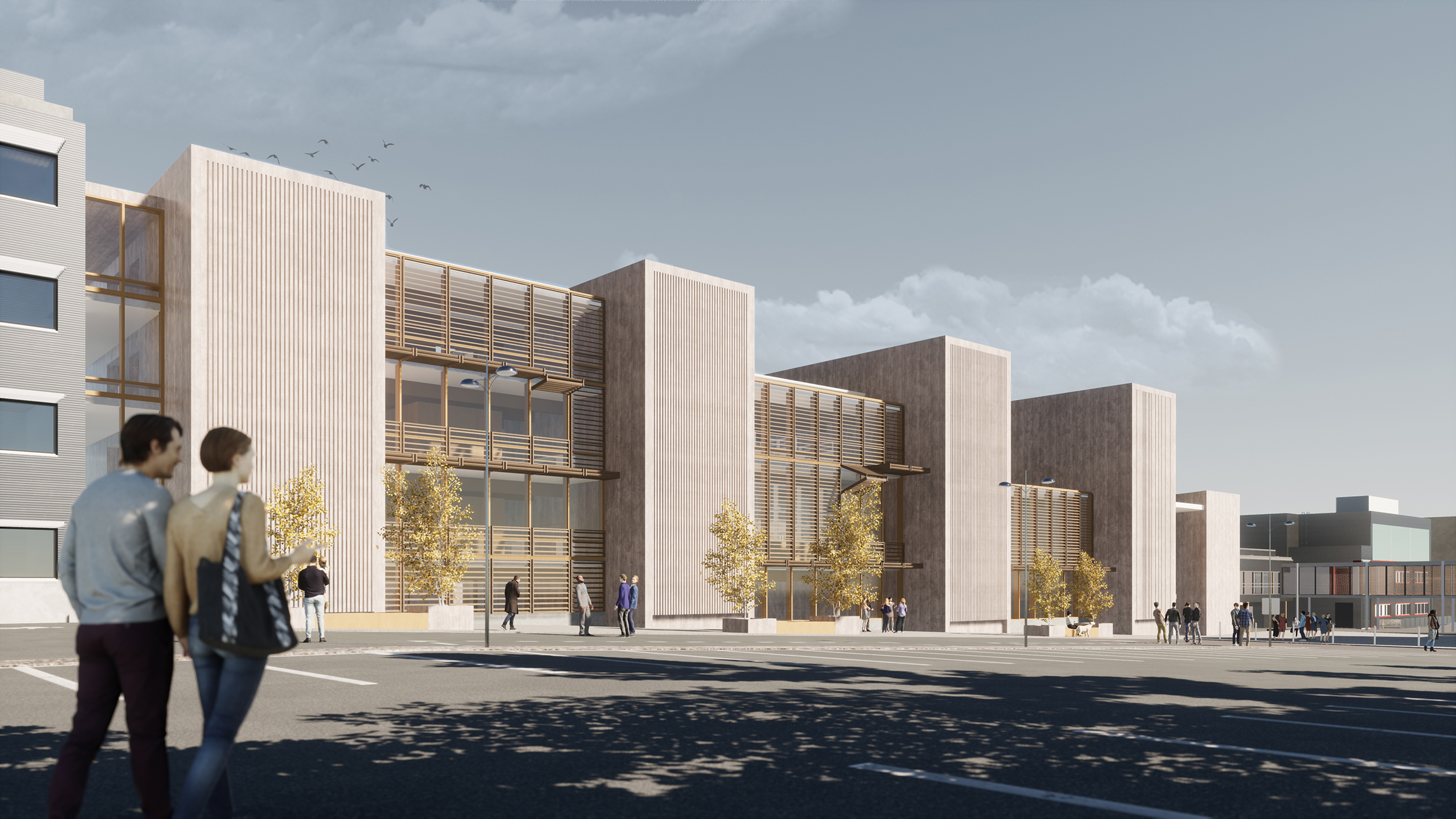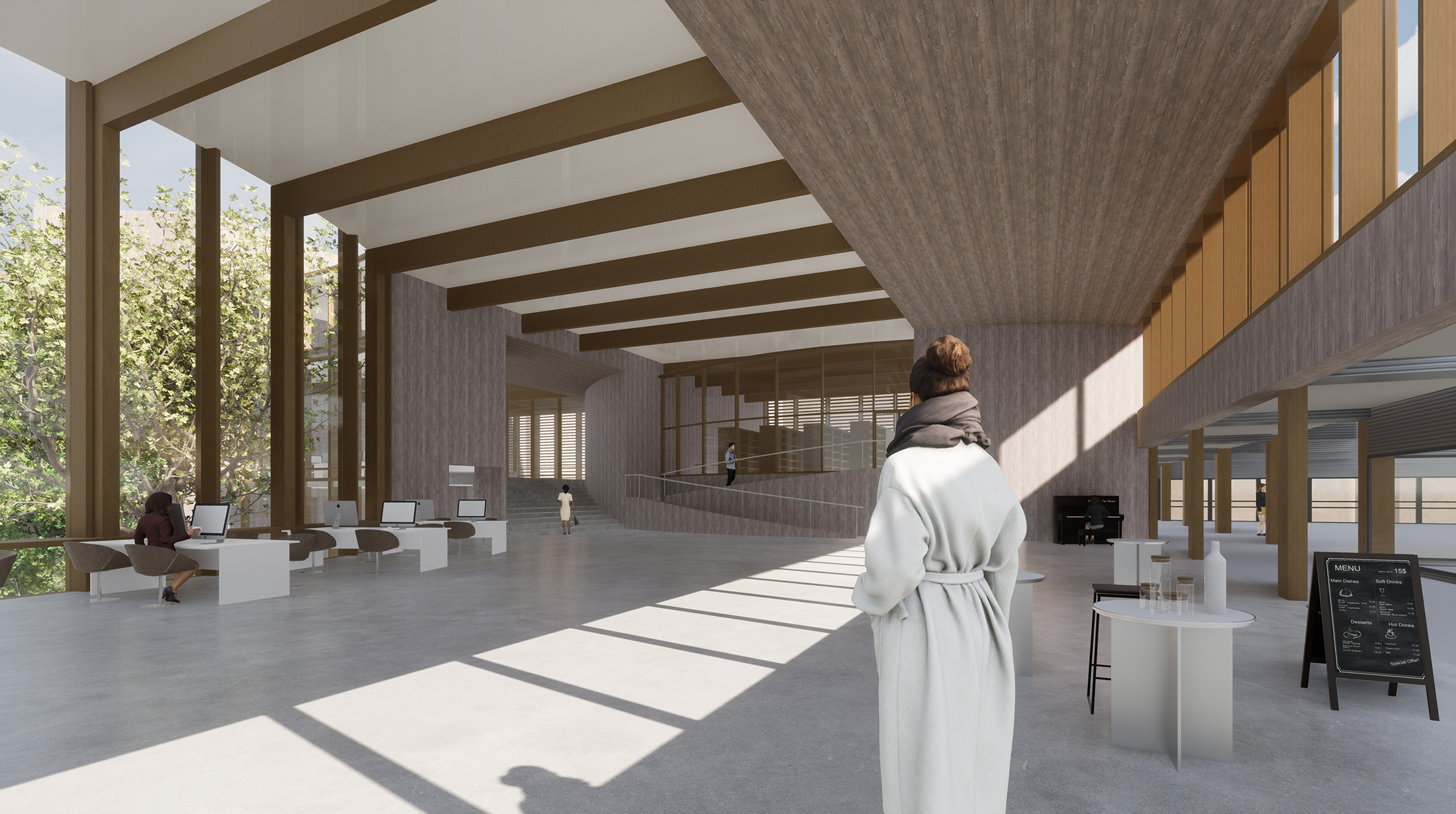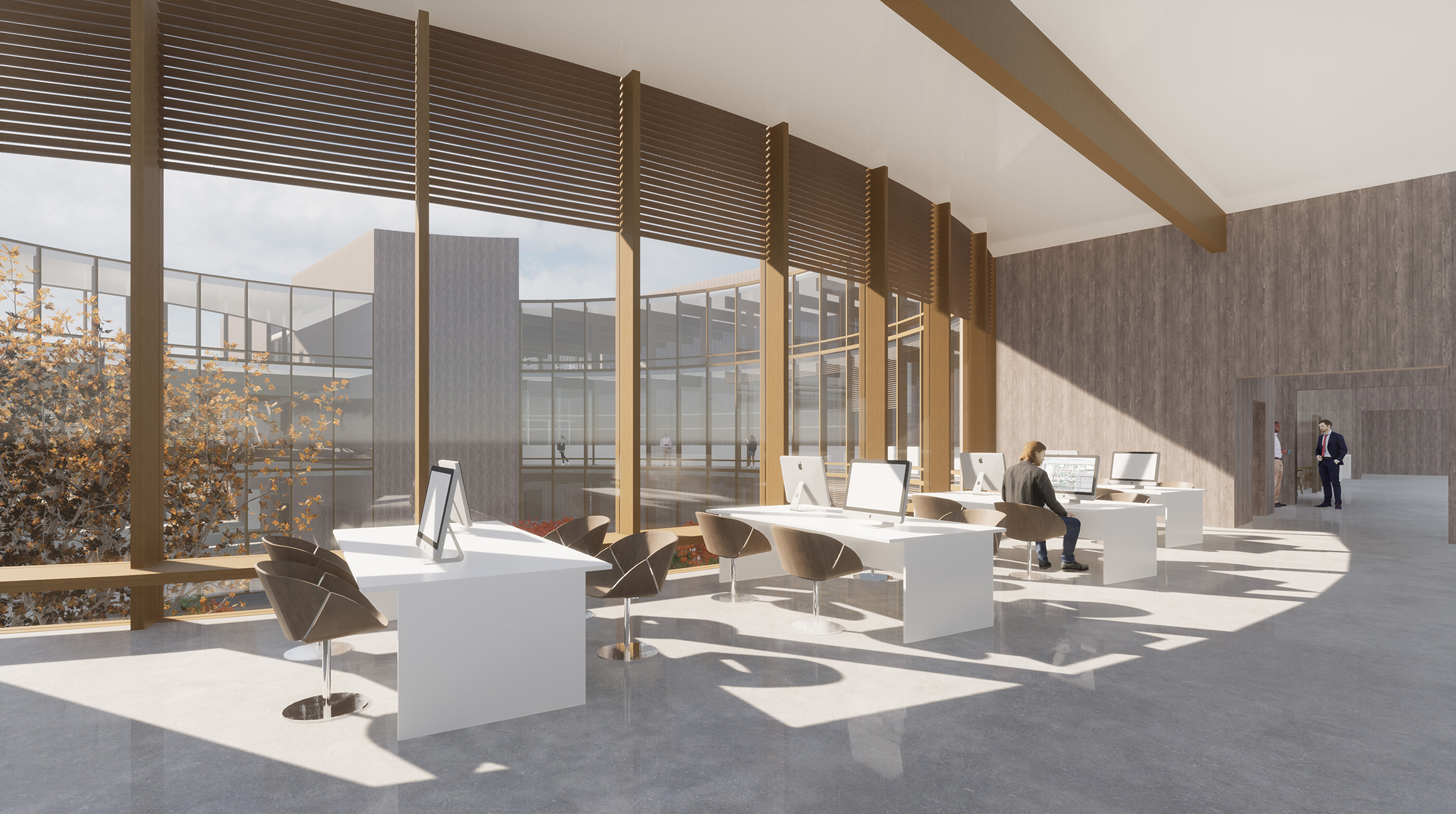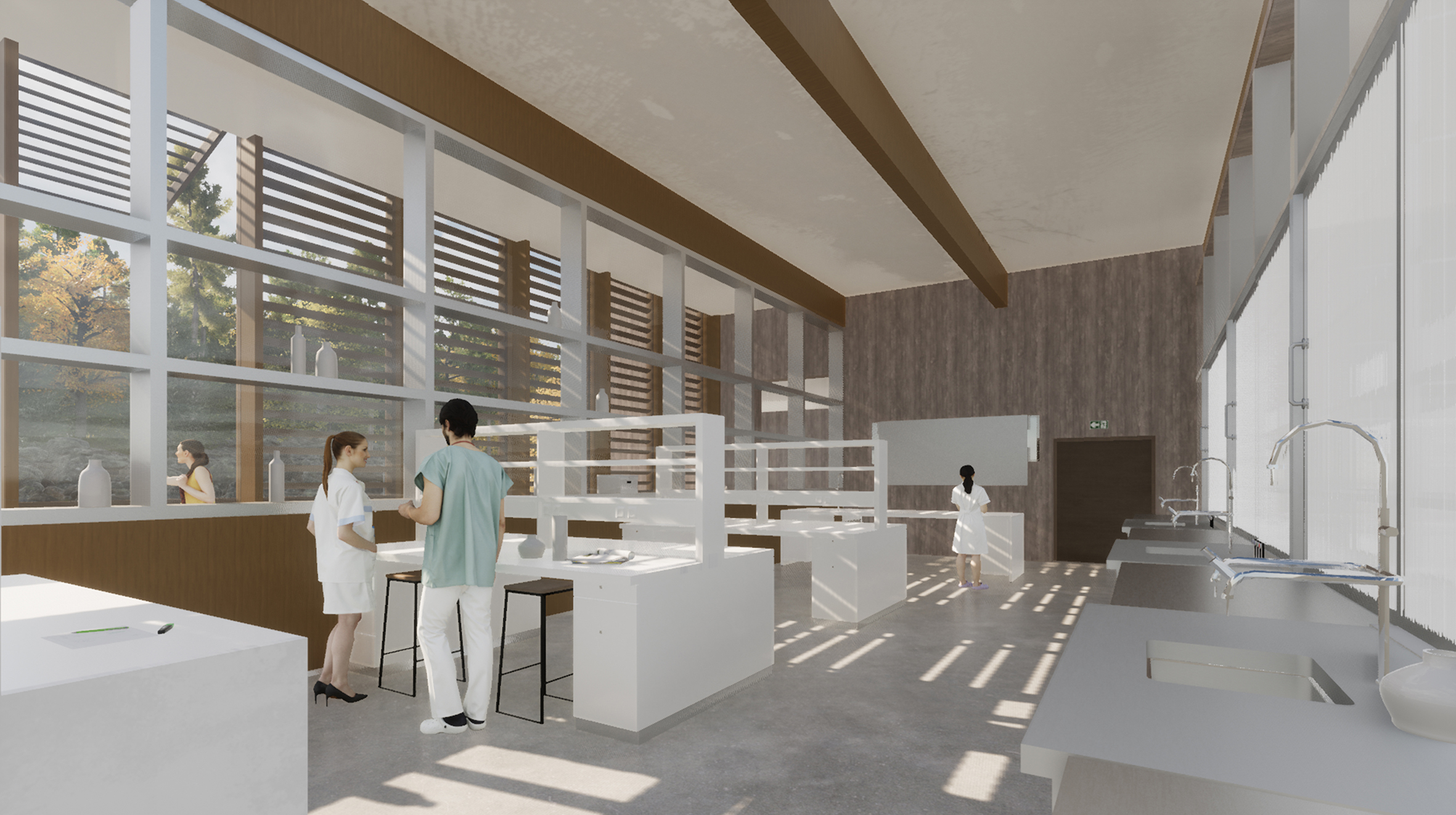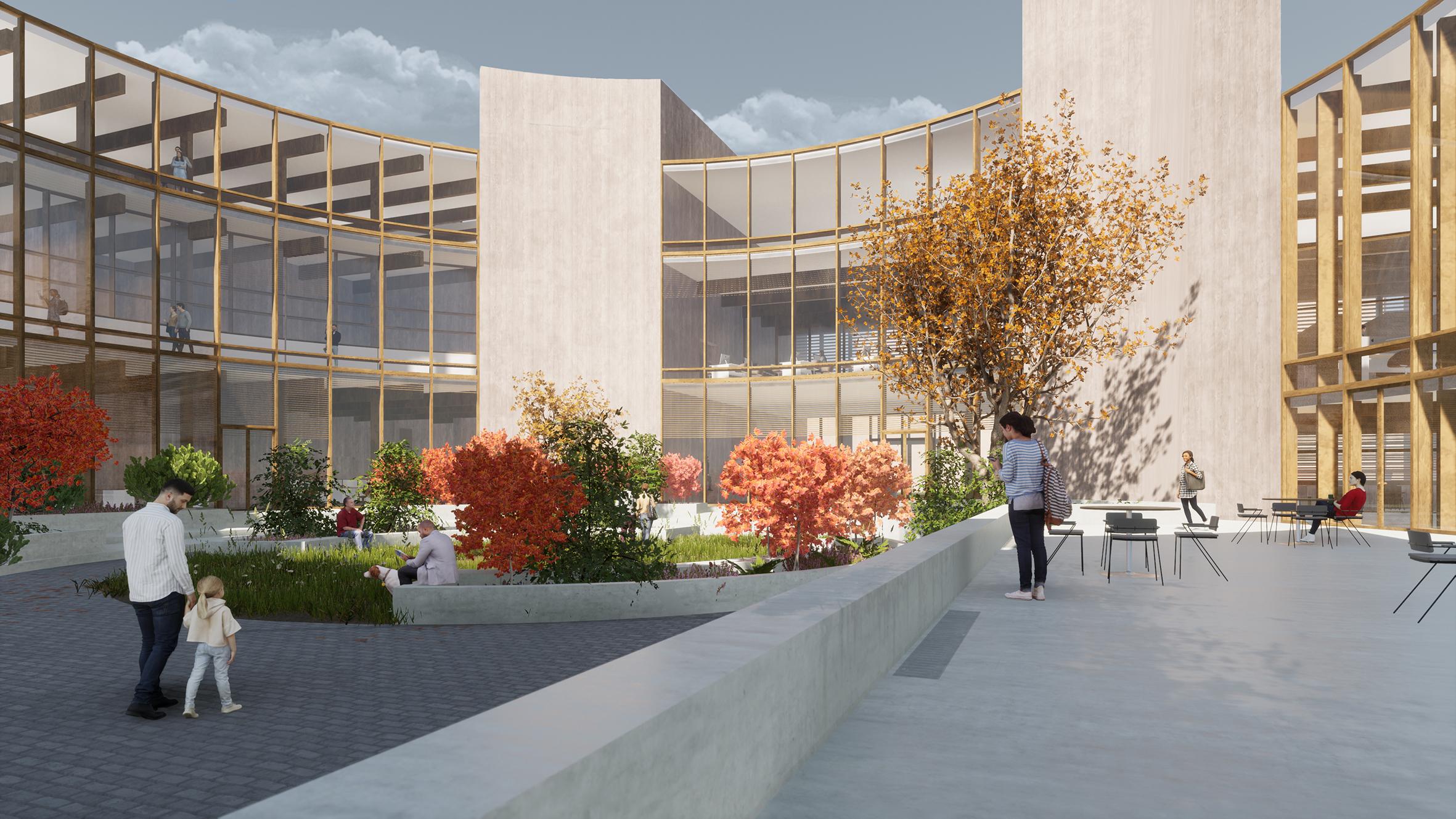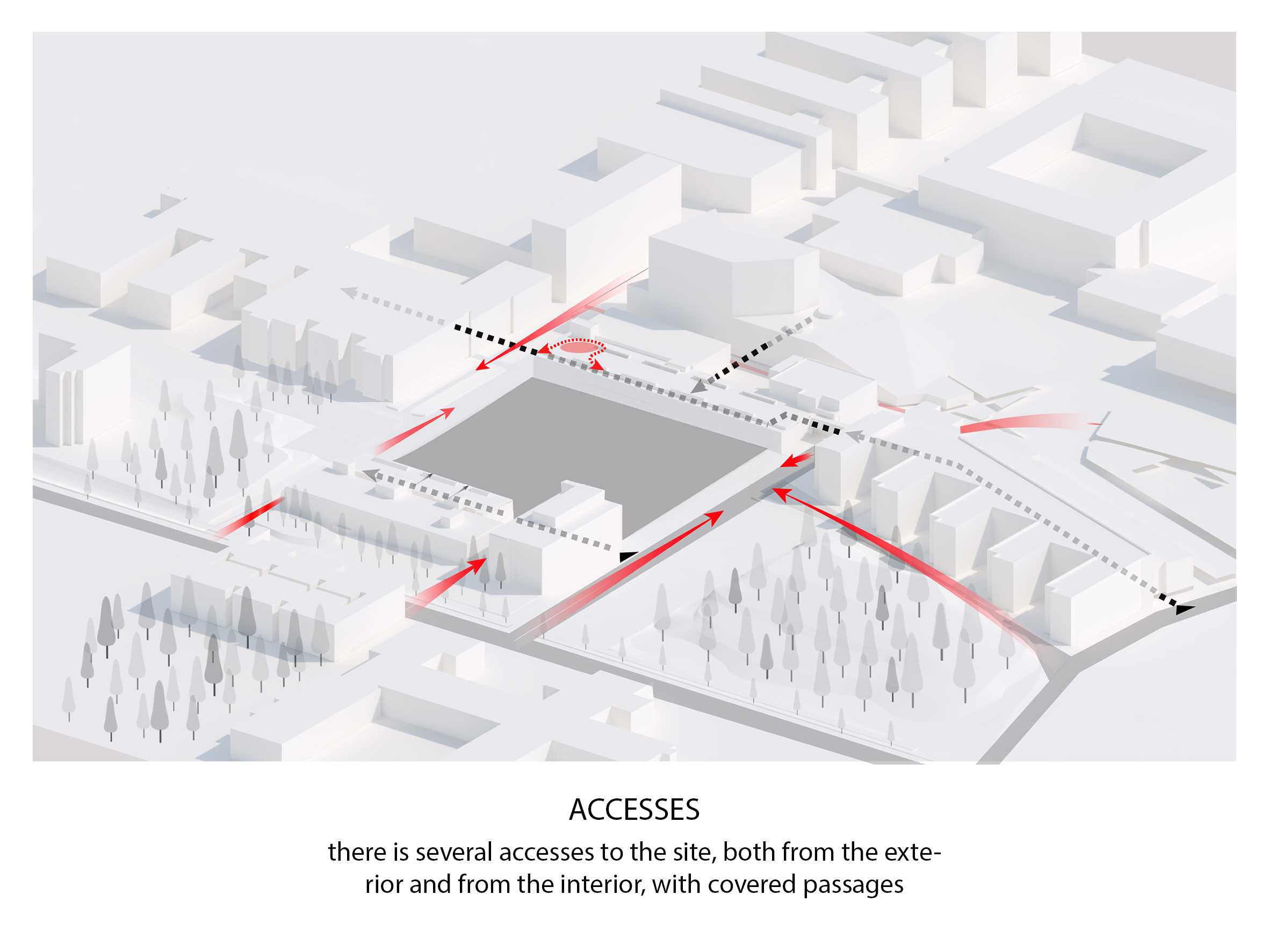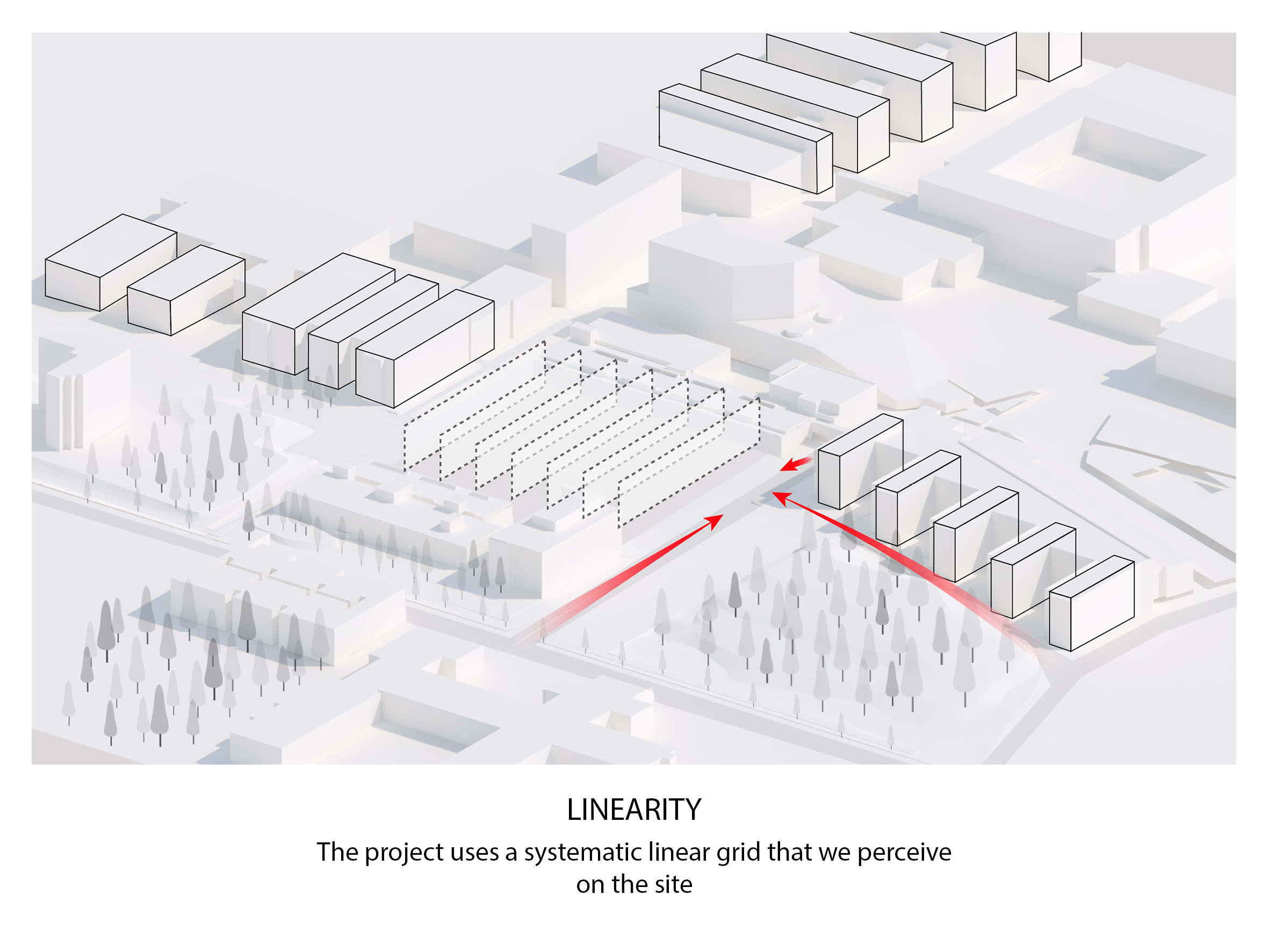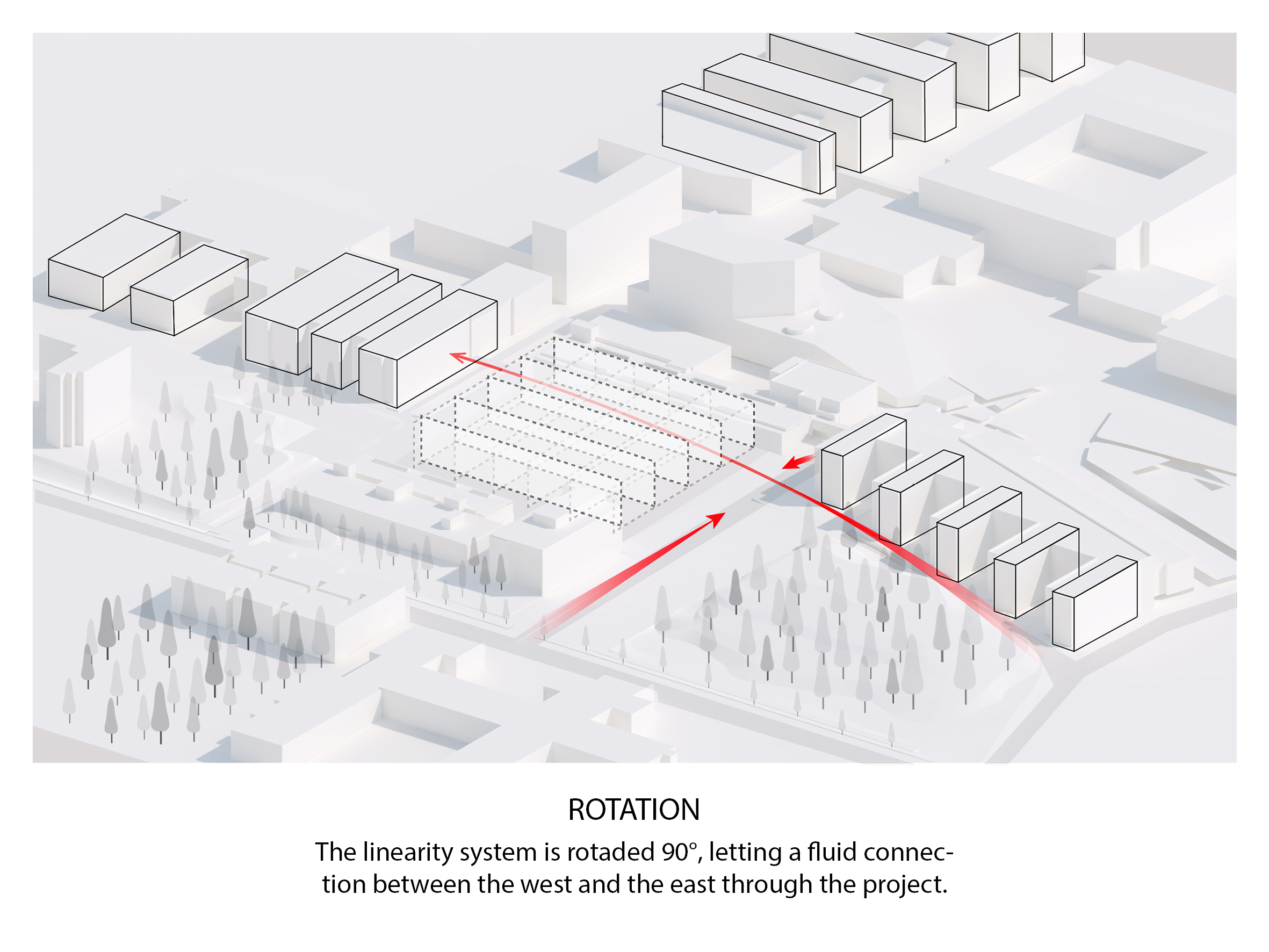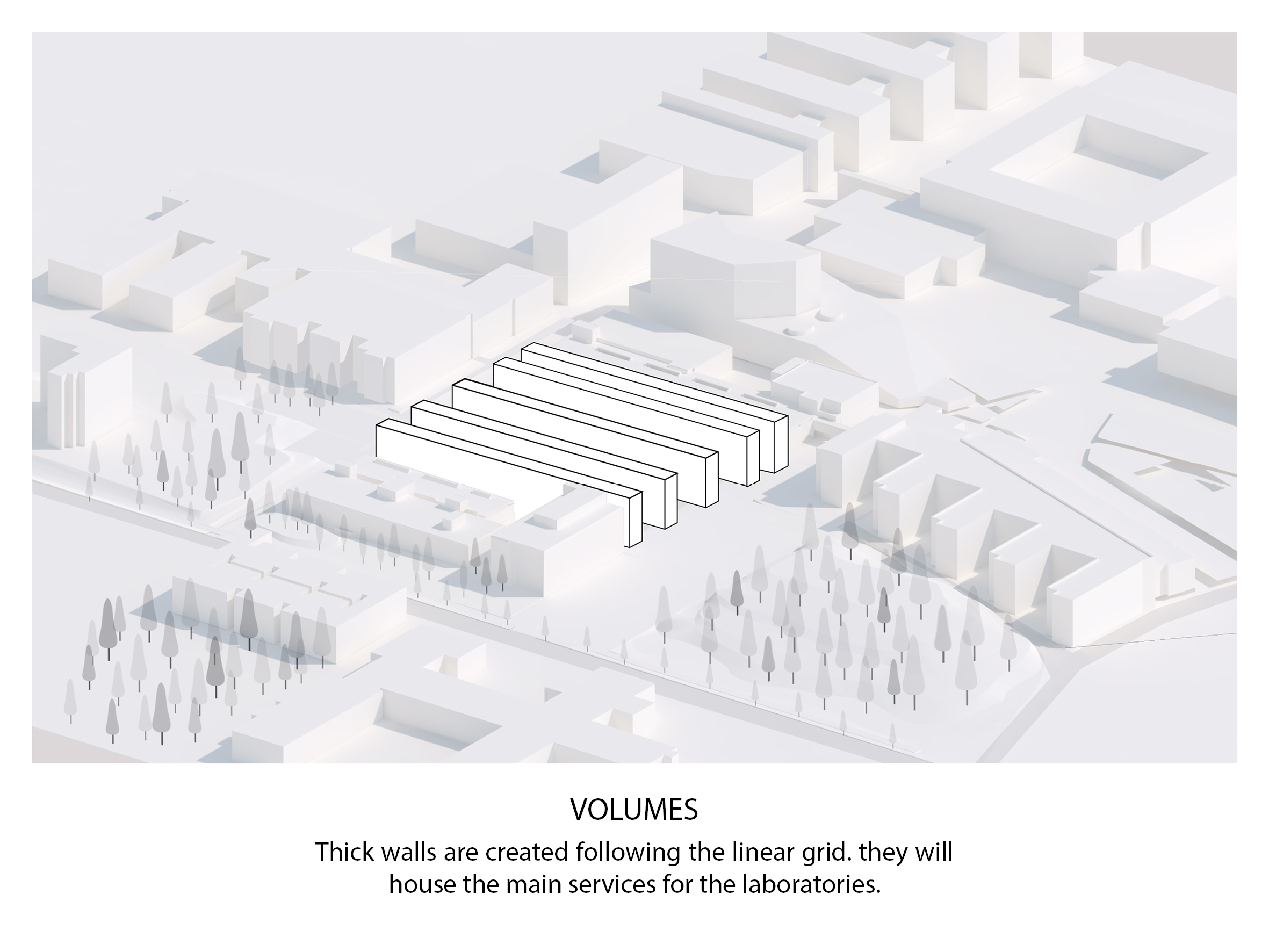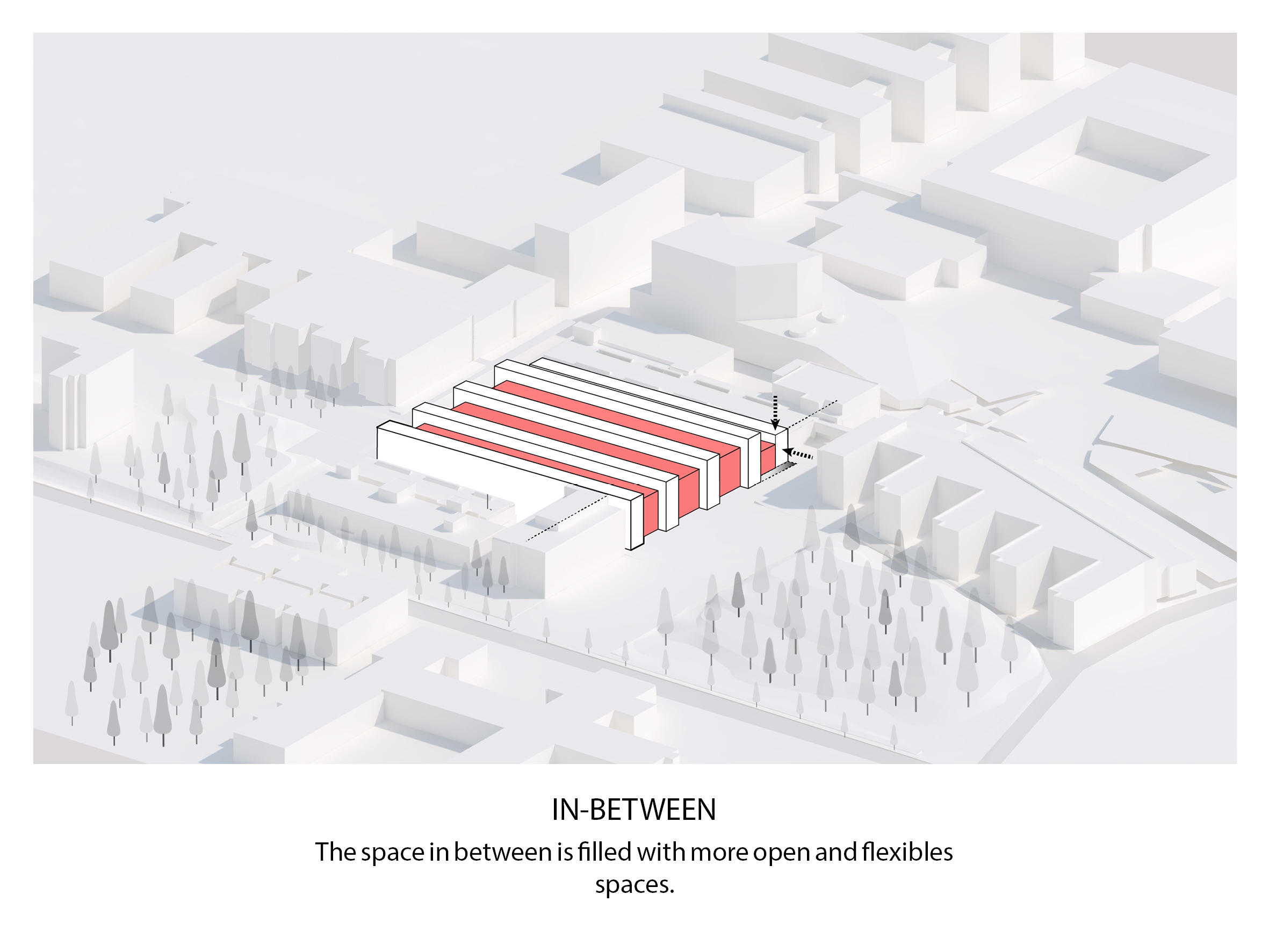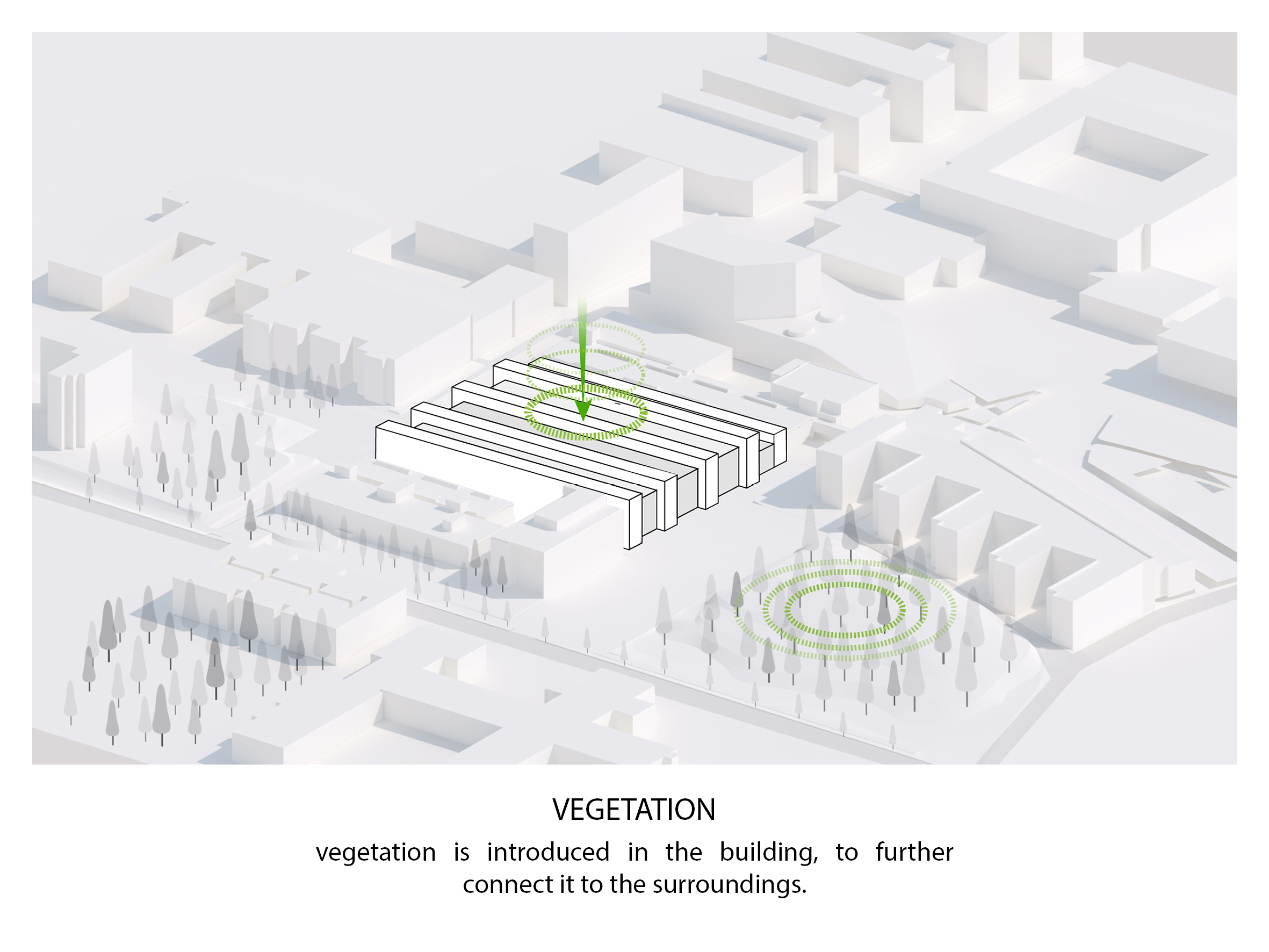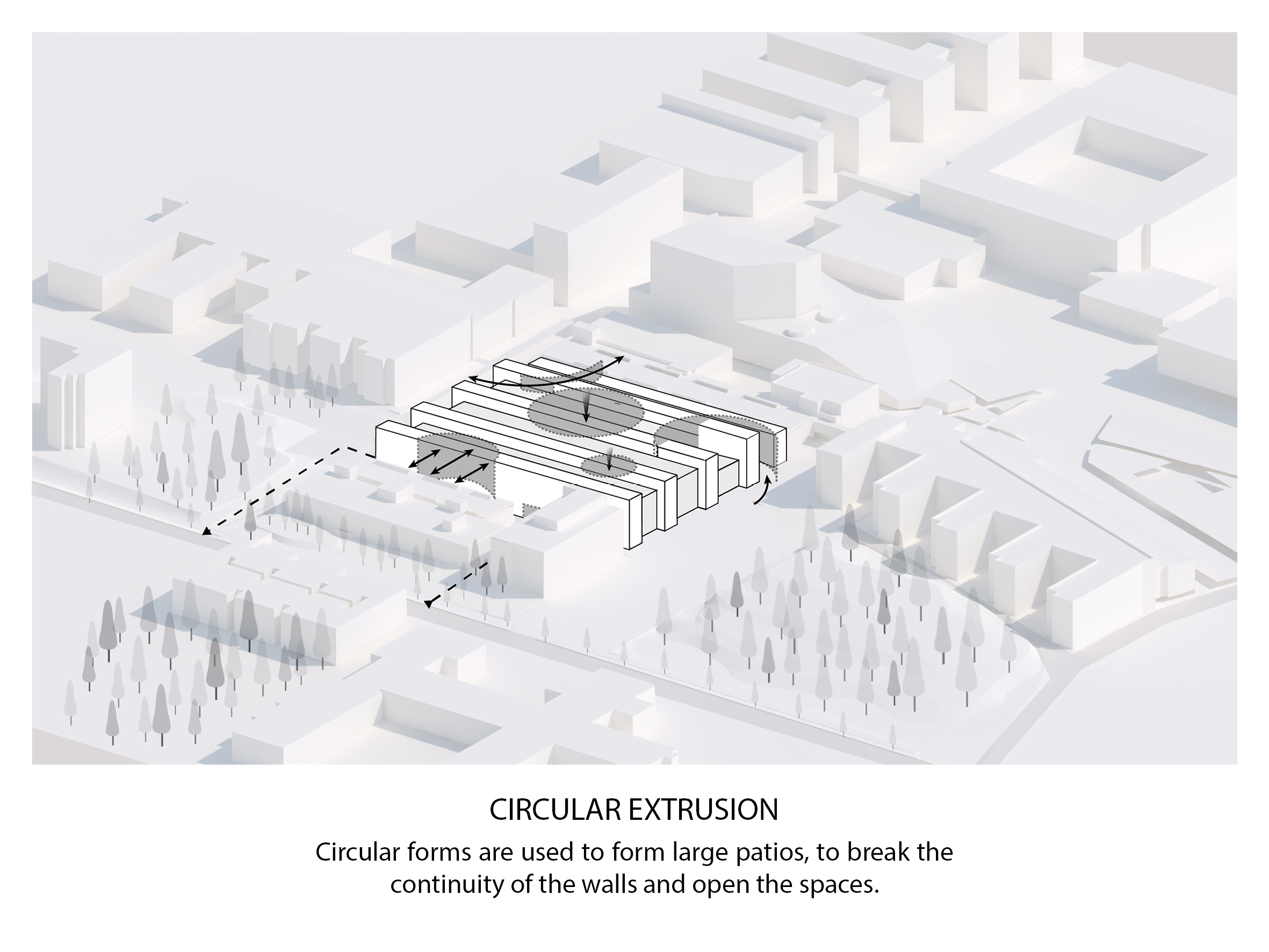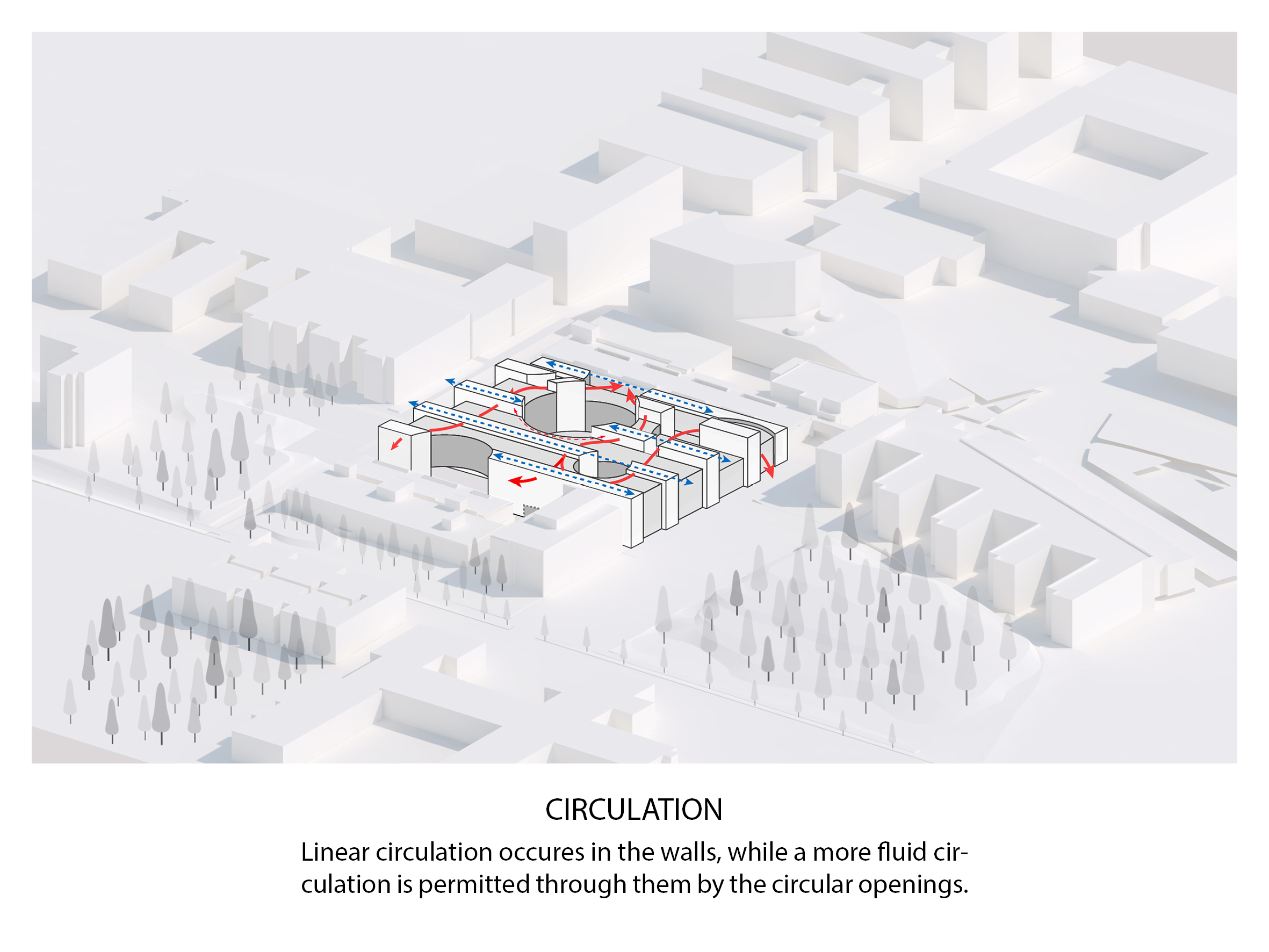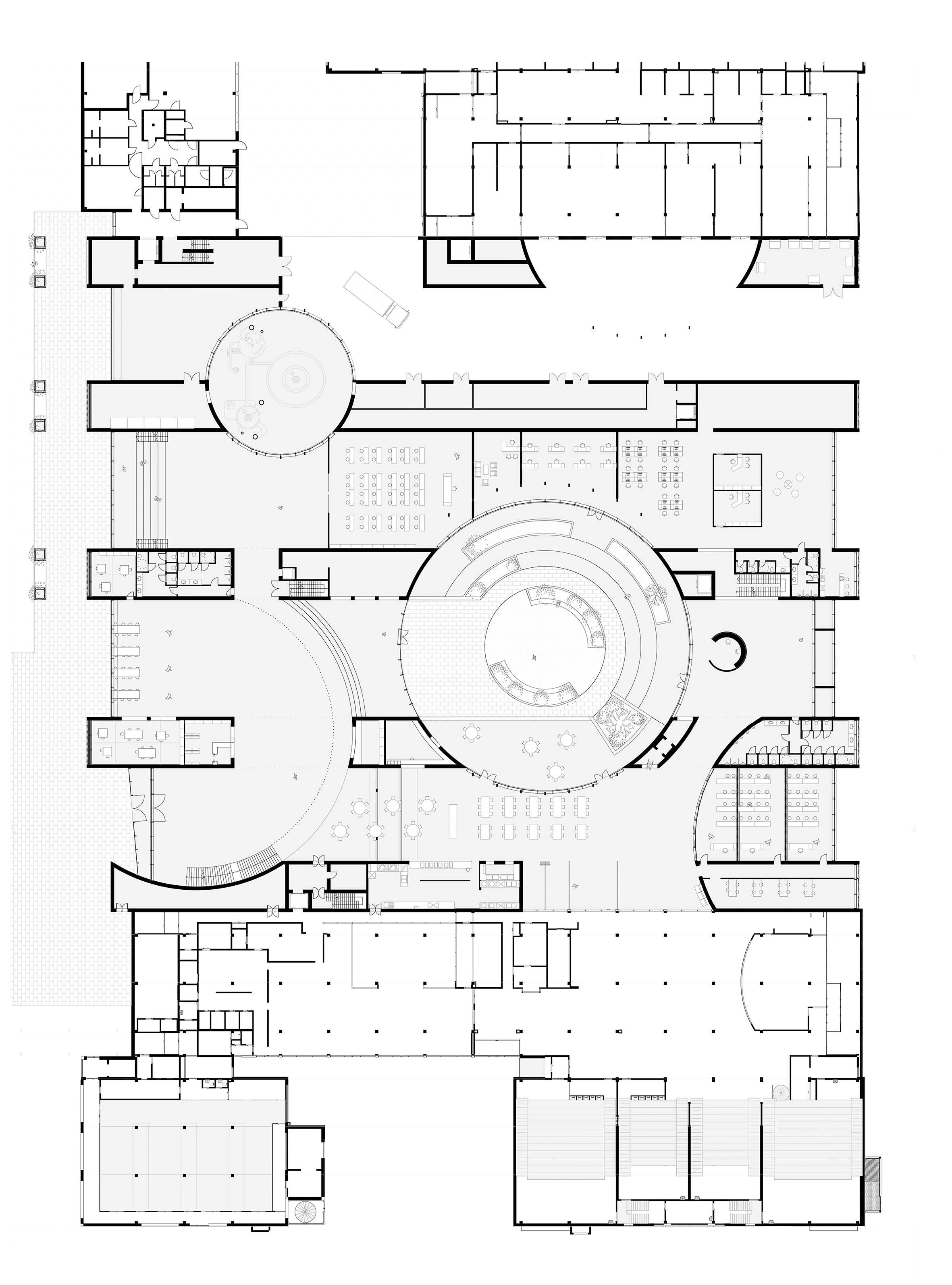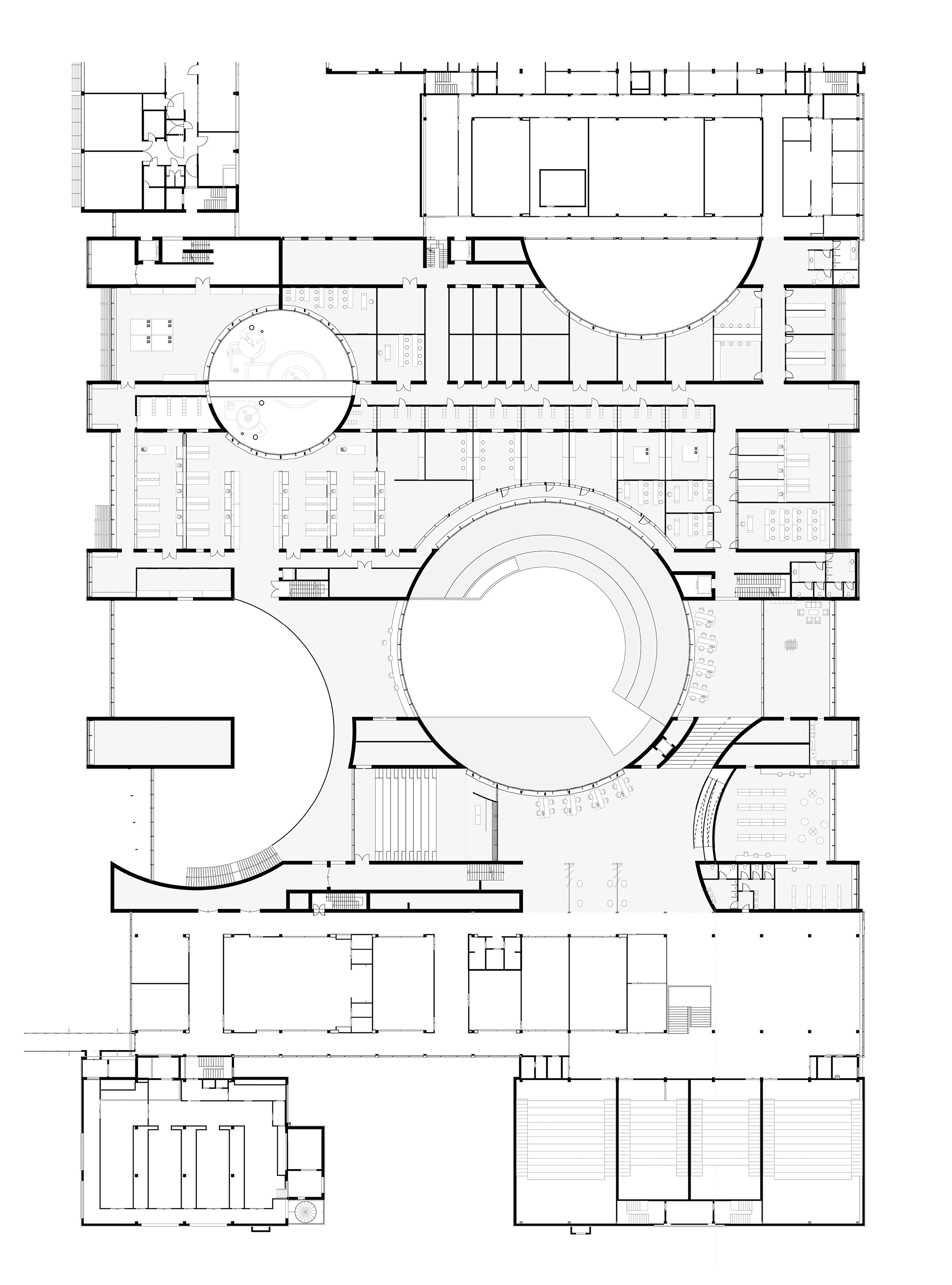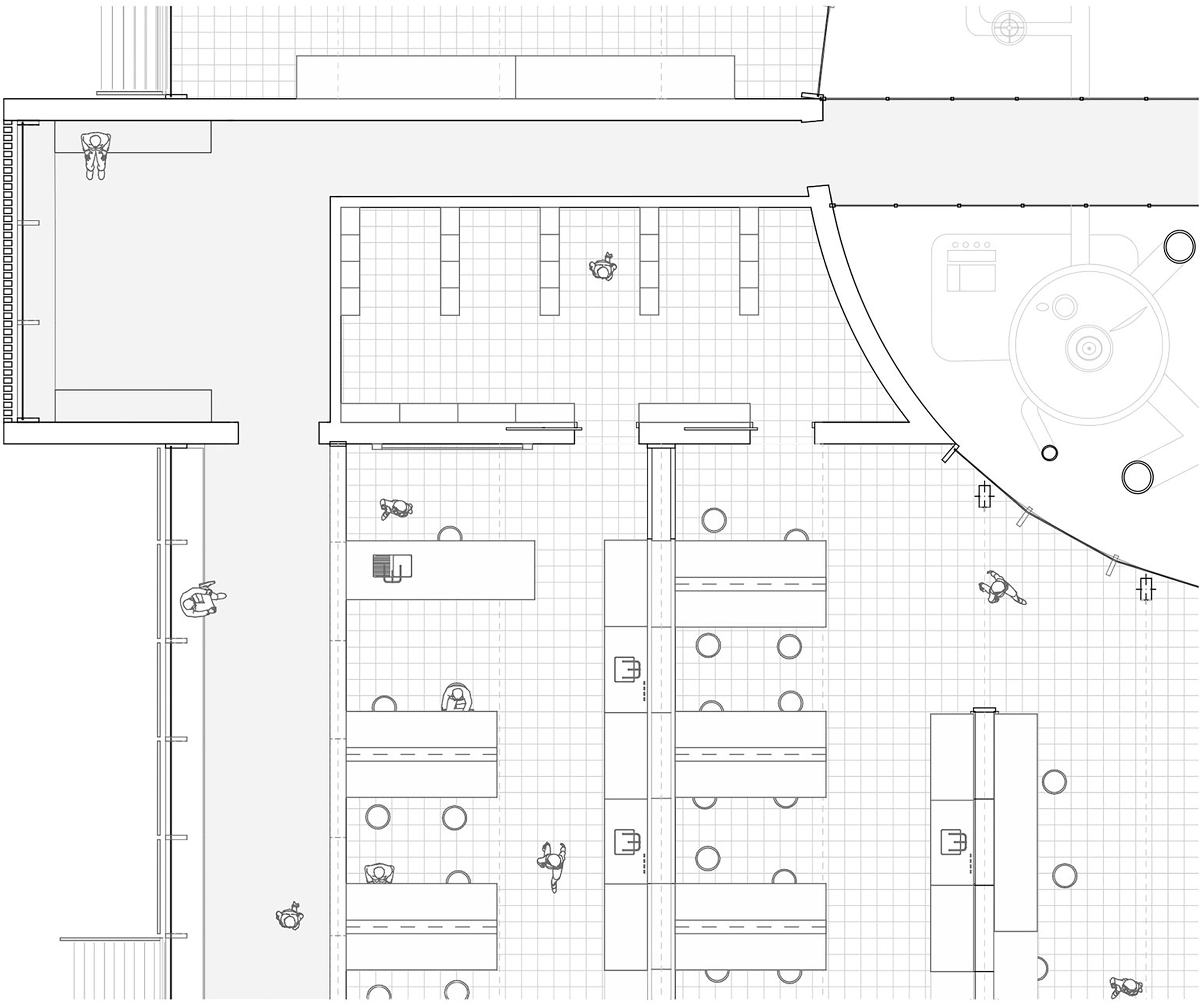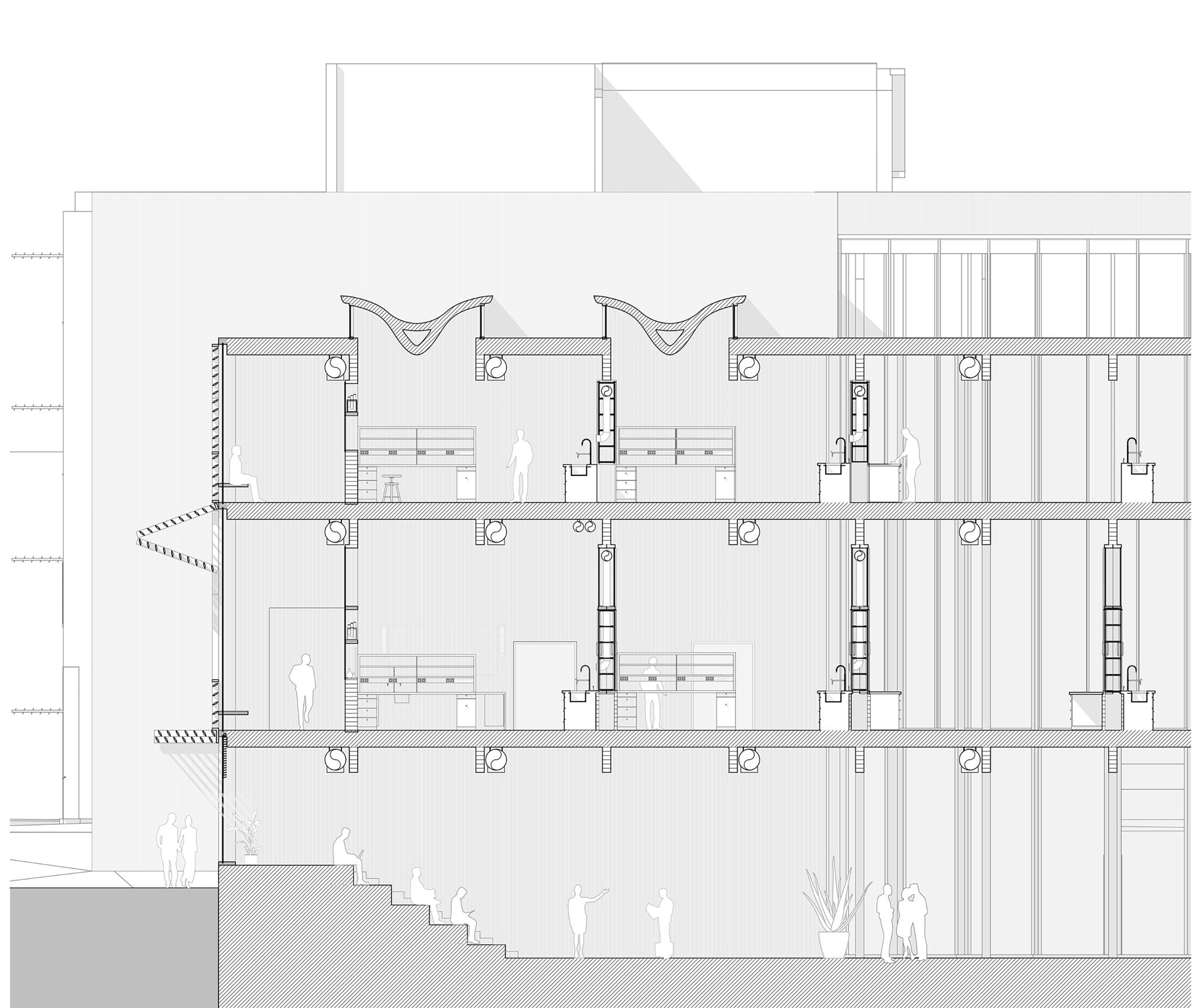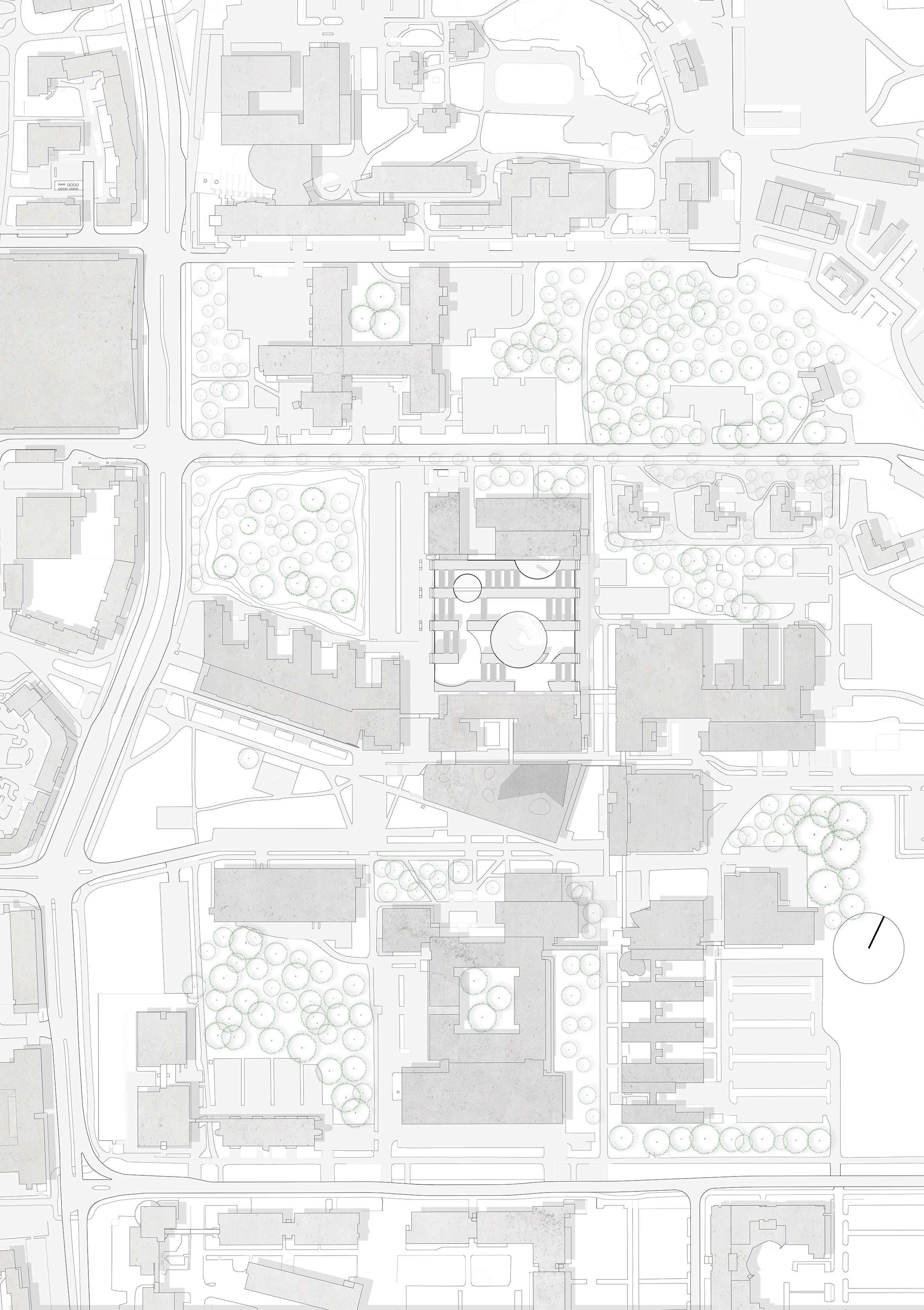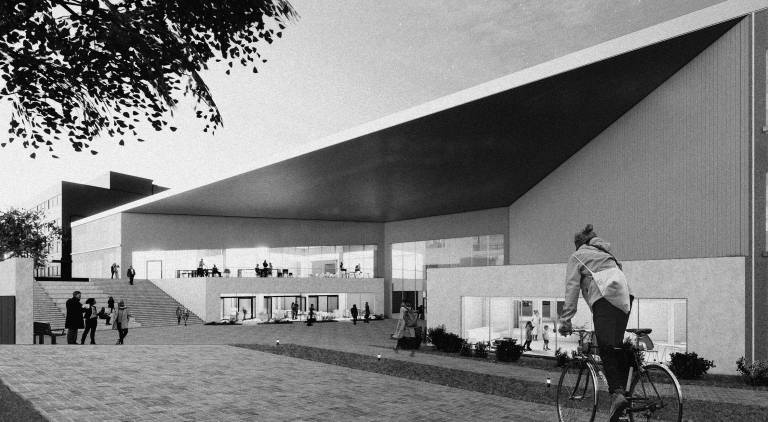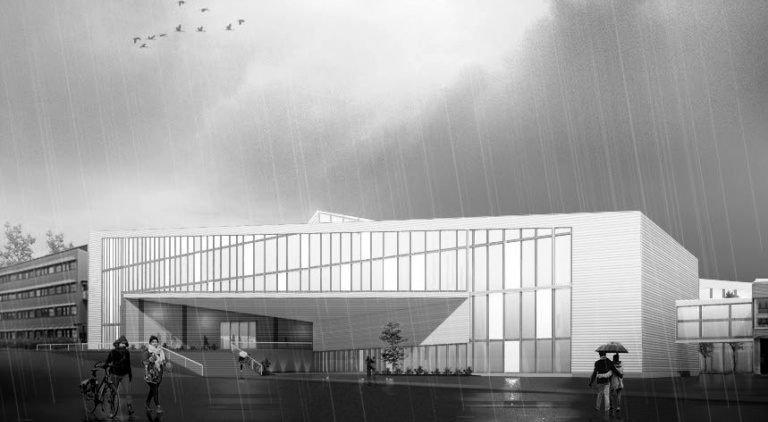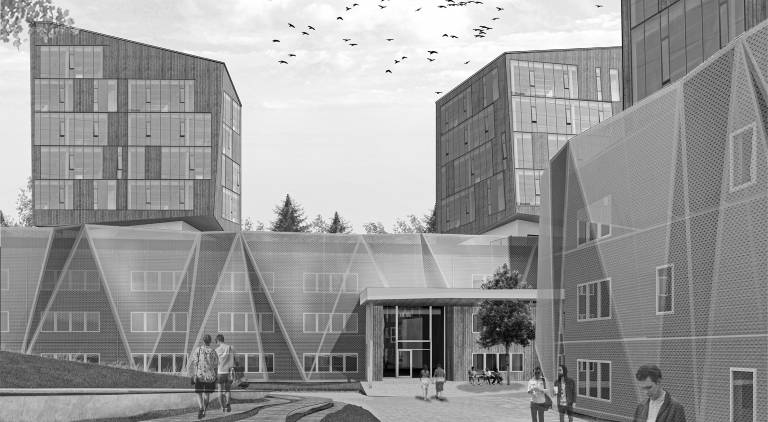For this project, there was a need of creating a strong architectural landmark for the university, nonetheless keeping unity and coherence between the buildings of the site. The project is therefore working with a certain systematicity and repetition of straight and parallel walls. To do that, the new building uses the structural framework of the old building. According to a 6×6 meters grid, we placed long straight walls in order to find the linear and repetitive system of the school. These walls are placed perpendicularly to the original ones.
Subsequently, we gave these walls a certain thickness, so they become both structural and functional. They will accommodate all the technical and service spaces and will also serve for circulation. Between these plain walls will be free spaces housing the core of the program, including the laboratories and classrooms, which will let their activity show through transparent or opaque glass panes.
To allow for such large spaces, large beams will span the entire width between the bearing walls, of maximum 15 meters. In some places, there will be specifically designed roof windows between the beams, that will let diffuse natural light through the space.
In order to bring light into the heart of the building and to fluidify the circulation, we created large circular patios, which breaks with the strict and straight lines of the building. This idea of straight lines diverted by circular shapes was inspired by Aldo van Eyck’s sculpture pavilion, the main reference for the beginning of the project.
